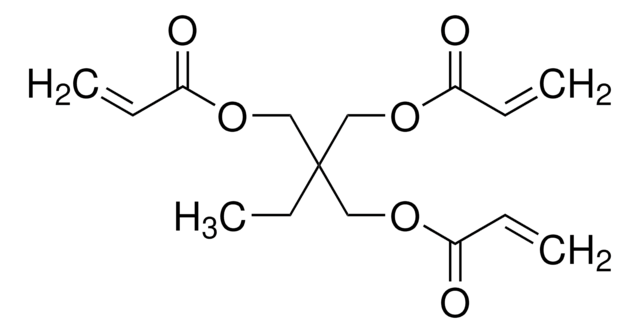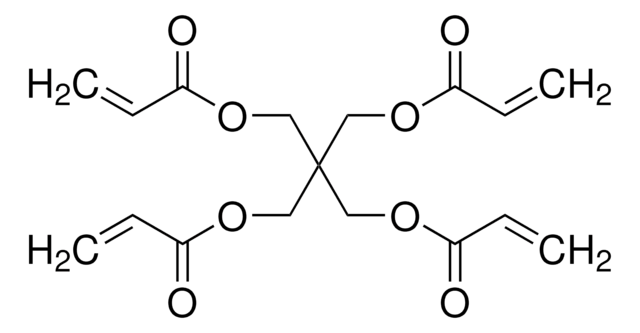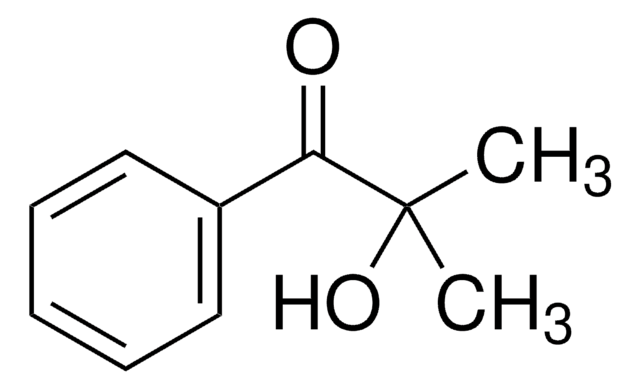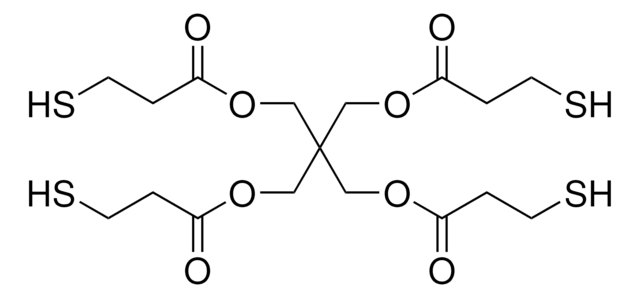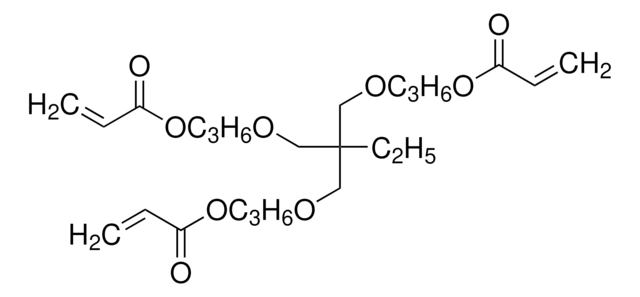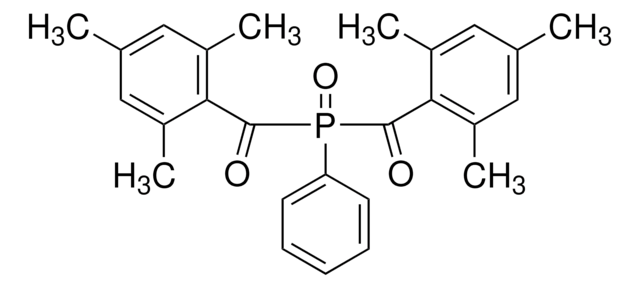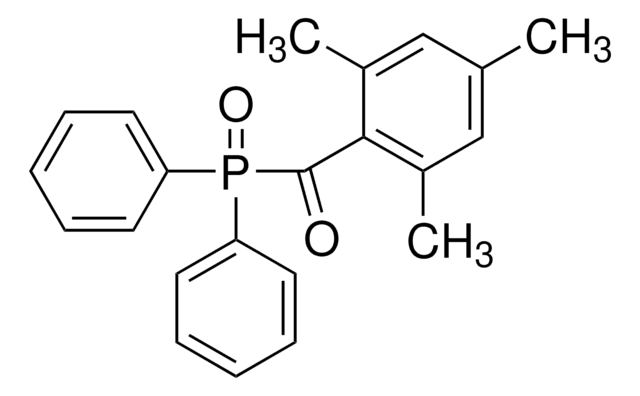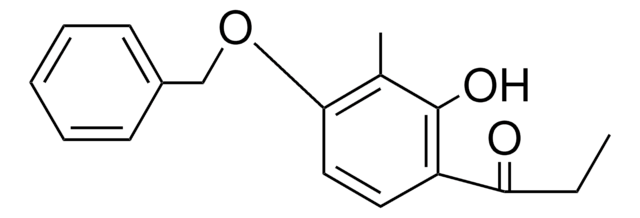409073
Trimethylolpropane ethoxylate triacrylate
average Mn ~428
Sinónimos:
Ethoxylated trimethylolpropane triacrylate, Polyethylene glycol trimethylolpropane ether triacrylate
About This Item
Productos recomendados
form
liquid
mol wt
average Mn ~428
refractive index
n20/D 1.471 (lit.)
bp
157 °C (lit.)
density
1.11 g/mL at 25 °C
SMILES string
CCC(COCCOC(=O)C=C)(COCCOC(=O)C=C)COCCOC(=O)C=C
InChI
1S/C21H32O9/c1-5-18(22)28-12-9-25-15-21(8-4,16-26-10-13-29-19(23)6-2)17-27-11-14-30-20(24)7-3/h5-7H,1-3,8-17H2,4H3
InChI key
MTPIZGPBYCHTGQ-UHFFFAOYSA-N
¿Está buscando productos similares? Visita Guía de comparación de productos
General description
Application
- As a cross-linking agent or a polymerizable monomer in the preparation of gel polymer electrolyte for Lithium-ion batteries. It enhances the thermal stability, ionic conductivity, and mechanical strength of the polymer.
- As a monomer to prepare UV-curable resins via vat photopolymerization, for stereolithography (SLA) and digital light processing (DLP). These techniques have potential applications in the 3D printing of medical devices, soft robots, dental implants, Optical adhesives, and microfluidic devices.
- To synthesize inverse micropatterned photonic crystal (PhC) films via photopolymerization for the detection of alcohol content in water.
signalword
Warning
hcodes
Hazard Classifications
Aquatic Chronic 3 - Eye Irrit. 2 - Skin Sens. 1B
Storage Class
10 - Combustible liquids
wgk_germany
WGK 1
flash_point_f
235.4 °F - closed cup
flash_point_c
113 °C - closed cup
ppe
dust mask type N95 (US), Eyeshields, Gloves
Certificados de análisis (COA)
Busque Certificados de análisis (COA) introduciendo el número de lote del producto. Los números de lote se encuentran en la etiqueta del producto después de las palabras «Lot» o «Batch»
¿Ya tiene este producto?
Encuentre la documentación para los productos que ha comprado recientemente en la Biblioteca de documentos.
Los clientes también vieron
Nuestro equipo de científicos tiene experiencia en todas las áreas de investigación: Ciencias de la vida, Ciencia de los materiales, Síntesis química, Cromatografía, Analítica y muchas otras.
Póngase en contacto con el Servicio técnico
